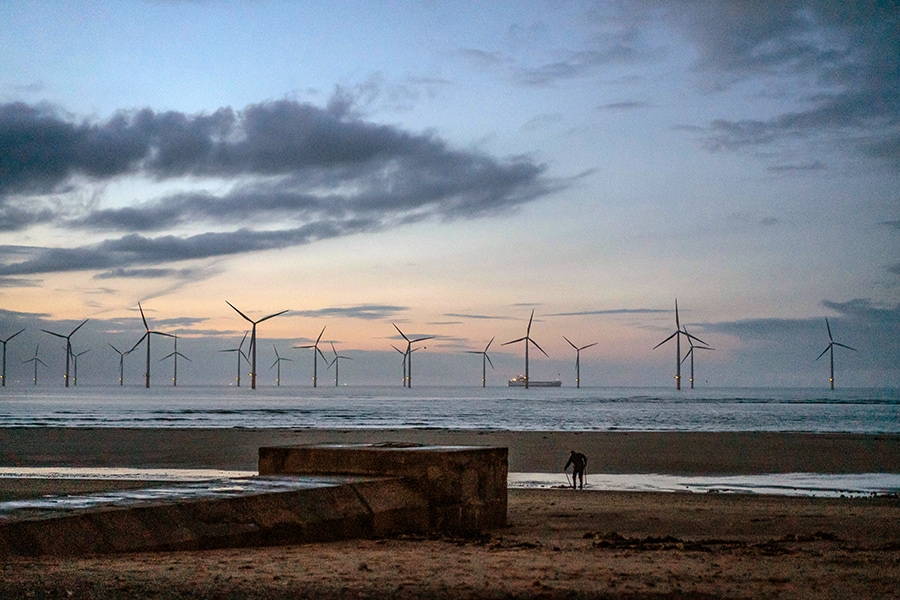
Britain turns to bankers to blaze a green trail
Since Brexit, Britain's financial industry has lost some of its lustre, and the treasury is exploring other ways to attract investors, including loosening the rules for listing companies to attract founder-led tech startups and backing financial technology companies
 A wind farm off Redcar, England, on Sept. 25, 2019. Activists want corporate transition plans to include investments in sustainable and green projects. (Andrew Testa/The New York Times)
A wind farm off Redcar, England, on Sept. 25, 2019. Activists want corporate transition plans to include investments in sustainable and green projects. (Andrew Testa/The New York Times)
Advocates descended on the streets of Glasgow, Scotland, last month, pressing banks and other financial institutions at the 26th United Nations climate summit to be more responsible stewards of the climate. But a bank based just 50 miles east of the city is already showing what that might look like.
NatWest, formerly the Royal Bank of Scotland, has made the unlikely transformation from substantial financier of the oil and gas industry to a leader in green finance, whittling down its fossil fuel exposure and pledging to funnel 100 billion pounds ($133 billion) into sustainable-energy projects in the next four years.
The bank, with headquarters in Edinburgh, could serve as an example of the huge shift necessary for Britain’s banking and investment sector to become, in the government’s words, “the world’s first net-zero-aligned financial center.”
Since Brexit, Britain’s financial industry has lost some of its luster, as London can no longer be used as a hub for European business. The Treasury, determined to maintain the nation’s eminence, is exploring other ways to attract investors, including loosening the rules for listing companies to attract founder-led tech startups and backing financial technology companies. But green finance could also be an answer.
NatWest’s climate-friendly transformation has even earned the cautious praise of some of its protesters.
©2019 New York Times News Service







